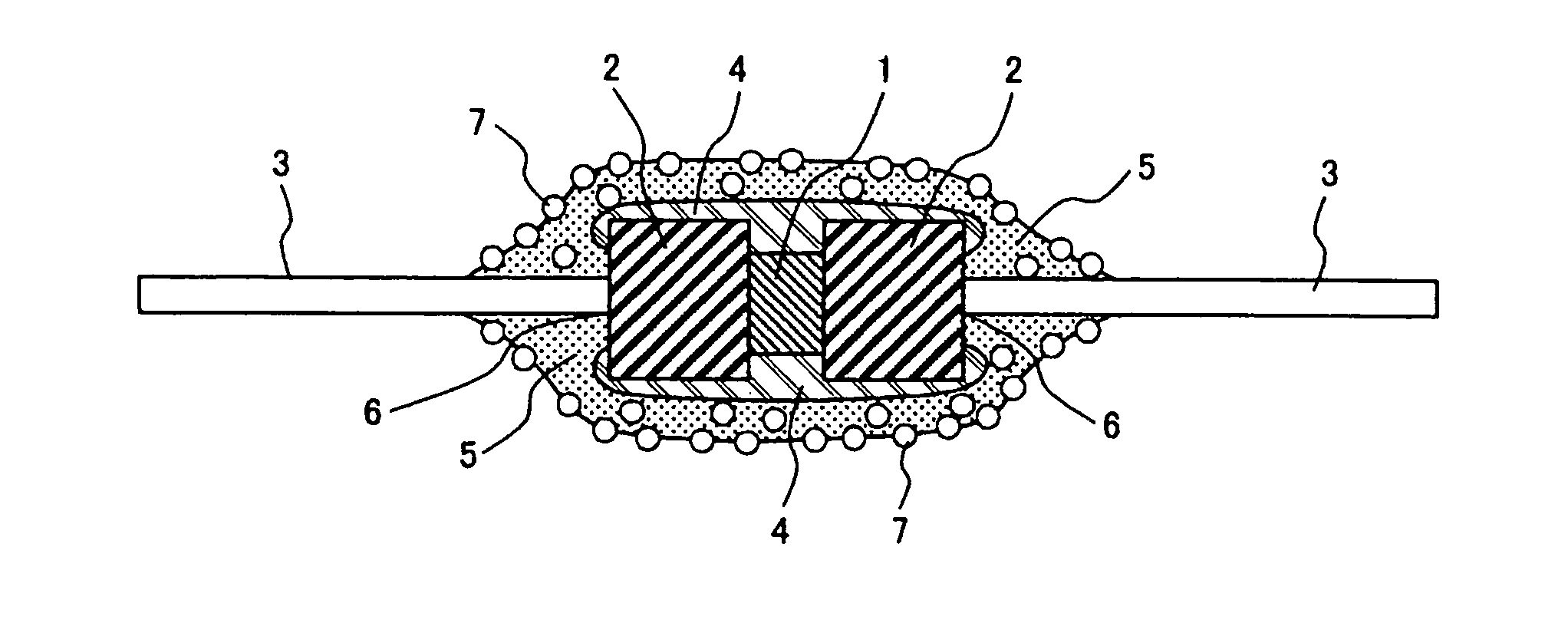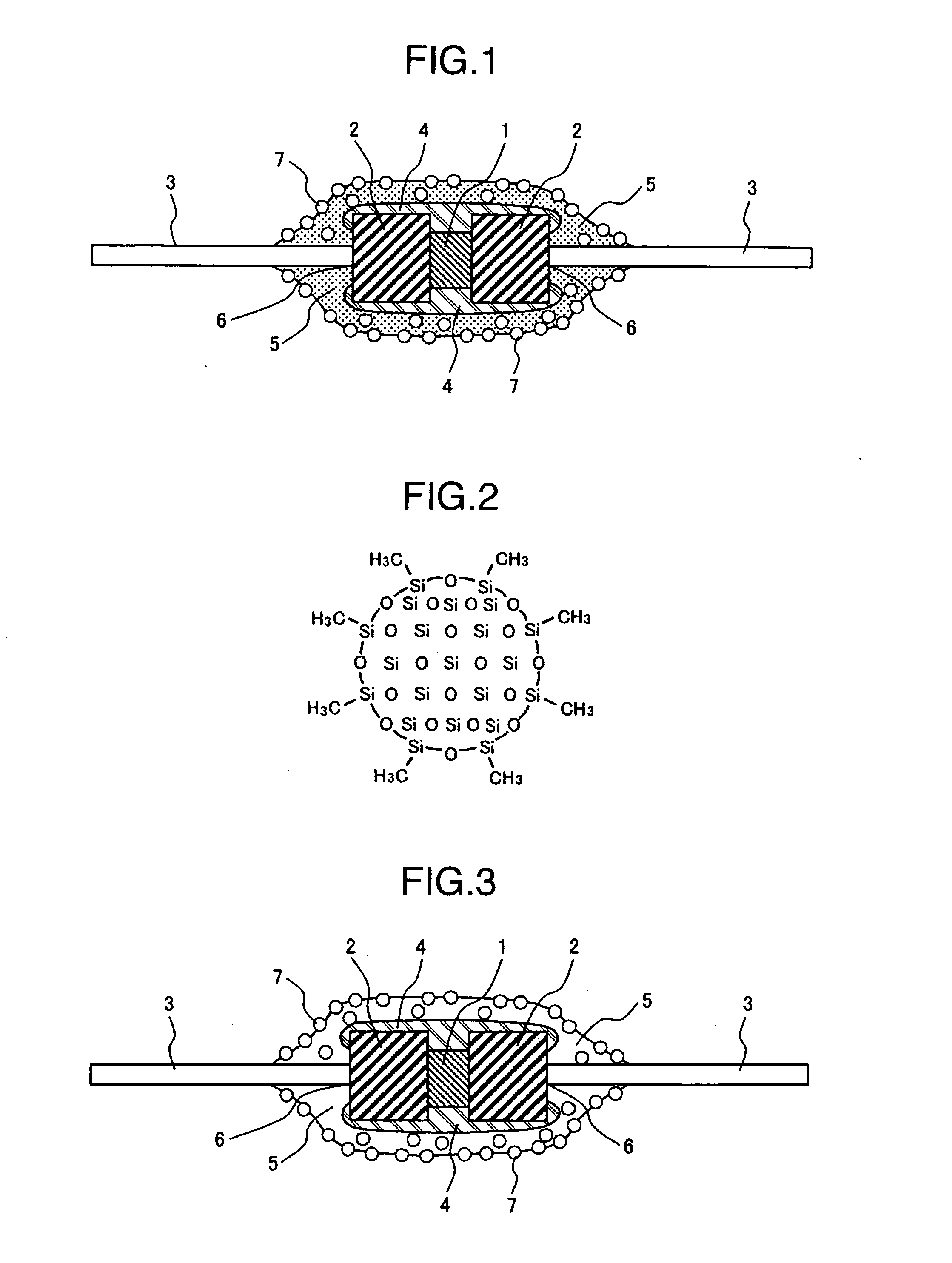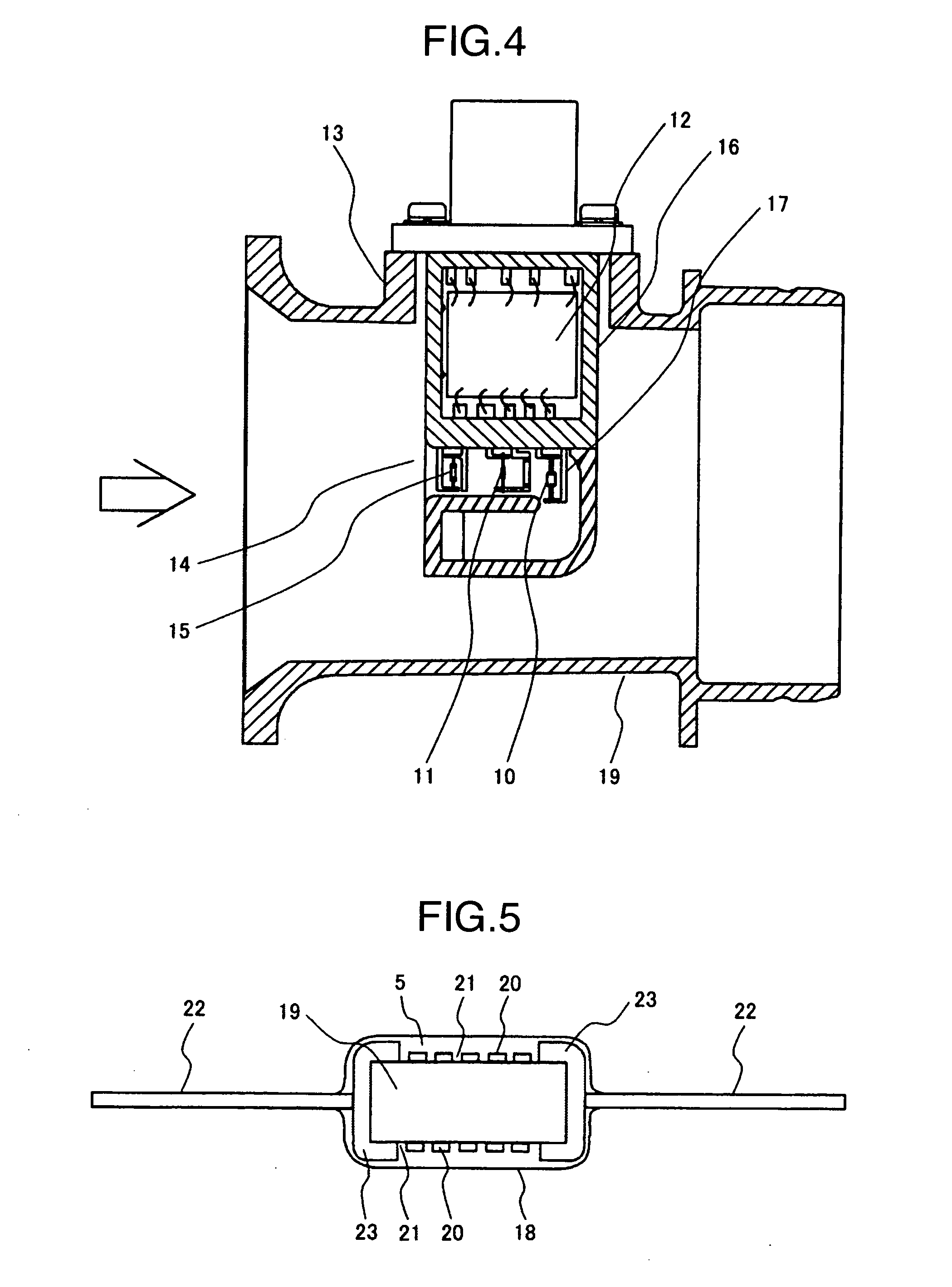Temperature-sensing device
a temperature sensor and temperature technology, applied in the direction of resistor details, heat measurement, instruments, etc., can solve the problems of corrosion, affecting so as to prevent the electrolytic corrosion and improve the anti-corrosion effect of the temperature sensor
- Summary
- Abstract
- Description
- Claims
- Application Information
AI Technical Summary
Benefits of technology
Problems solved by technology
Method used
Image
Examples
example 1
[0056] First, the problems of a conventional temperature sensor will be described with reference to FIG. 9. FIG. 9 shows the sectional structure of a conventional thermistor (a temperature sensor) using a thermistor chip commonly called as an axial type. FIG. 1 is a section view of a thermistor according to the present invention.
[0057] The structure of the temperature sensor according to the present invention using the thermistor chip will be described with reference to FIG. 9. Reference numeral 1 shows the thermistor chip formed of a semiconductor having properties (such as a resistance value) which vary with a temperature change. Electrodes (not shown) for detecting signals are provided on both ends of the thermistor chip 1. A sealing electrode 2 is connected to each of the electrodes on both ends of the thermistor chip 1 in the way electrical conductivity is not lost.
[0058] The sealing electrode 2 is often formed of dumet which has cuprous oxide (Cu2O) including copper as an in...
example 2
[0078]FIG. 3 shows Example 2 different from Example 1 shown in FIG. 1. Example 2 provides a structure for further improving the effect of hydrophobicity on the surface caused by the hydrophobic fillers contained in the resin member. The axial-type thermistor shown in FIG. 9 is used as the structure of the thermistor of Example 2. The thermistor coated with a resin 5 is further covered with a resin containing fillers having hydrophobic groups as a second layer coat film 8 on the surface of a first layer coat film 7. An example of an epoxy resin used as the coat member 5 will be described. The thermistor is coated with the epoxy resin as the first layer coat film 7.
[0079] The epoxy resin is volatilized with a solvent at a temperature before the ring is opened in provisional drying (semi-curing). The surface of the coat after the provisional drying is coated with an epoxy resin of at least 5 wt % as the second layer coat film 8 provided by appropriately adding hydrophobic fillers to t...
example 3
[0080] Another method for realizing Example 1 shown in FIG. 1 will be described. After the entire glass tube 4 including the welded part 6 between the lead wire 3 and the sealing electrode 2 of the thermistor is coated with the resin 5, the solvent is vaporized at a temperature before the epoxy ring is opened, that is, provisional drying is performed. In that state, hydrophobic fillers are caused to adhere to the surface of the resin coat 5 and then main drying is performed. In this manner, the surface can be reformed to have water repellency.
PUM
| Property | Measurement | Unit |
|---|---|---|
| particle size | aaaaa | aaaaa |
| particle size | aaaaa | aaaaa |
| particle size | aaaaa | aaaaa |
Abstract
Description
Claims
Application Information
 Login to View More
Login to View More - R&D
- Intellectual Property
- Life Sciences
- Materials
- Tech Scout
- Unparalleled Data Quality
- Higher Quality Content
- 60% Fewer Hallucinations
Browse by: Latest US Patents, China's latest patents, Technical Efficacy Thesaurus, Application Domain, Technology Topic, Popular Technical Reports.
© 2025 PatSnap. All rights reserved.Legal|Privacy policy|Modern Slavery Act Transparency Statement|Sitemap|About US| Contact US: help@patsnap.com



